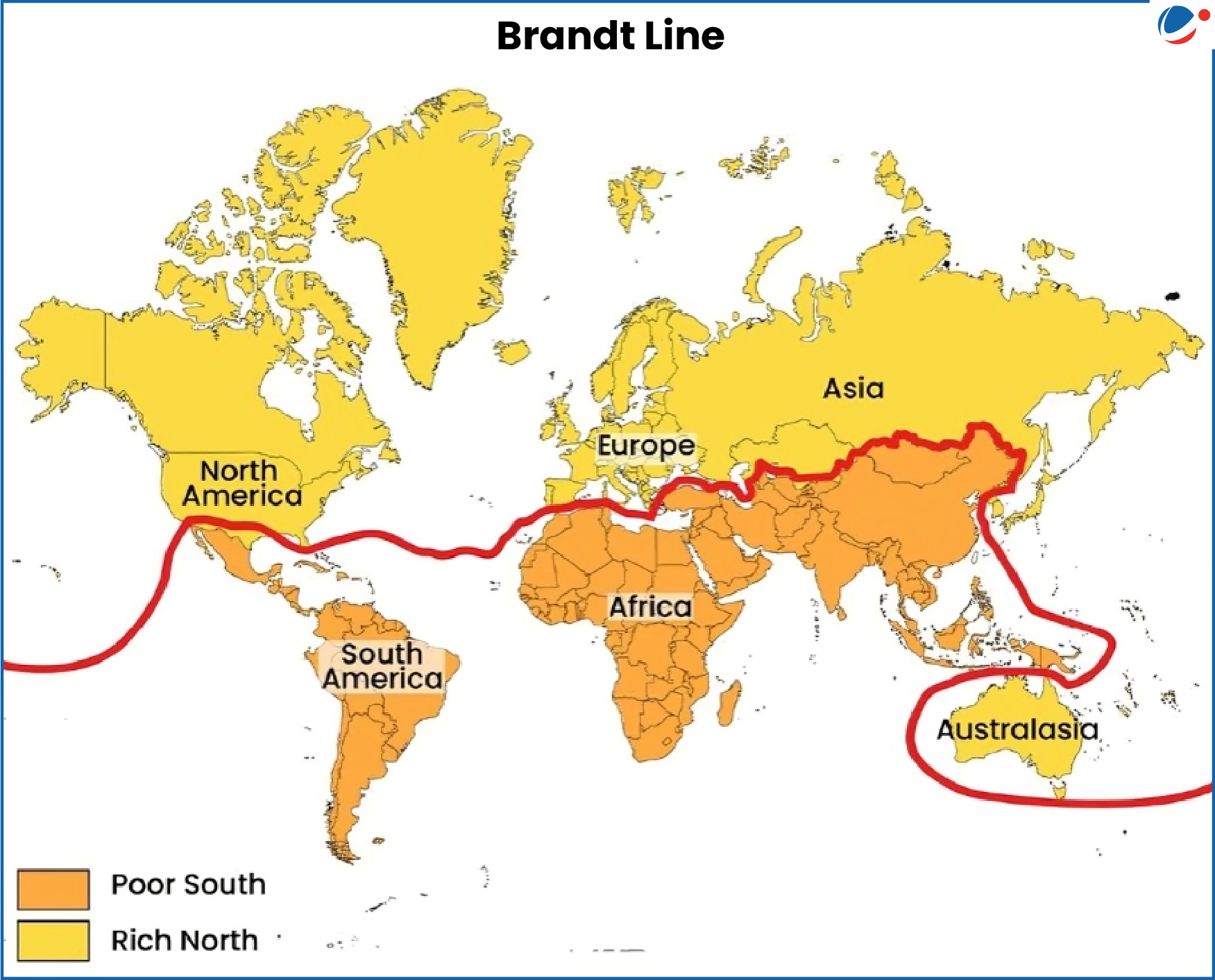Indian Prime Minister highlighted that the World Order created after World War II (WWII) is changing rapidly, driven by the rise of the Global South.
- Post-World WWII, global power dynamics became bipolar, dominated by the USA and the Union of Soviet Socialist Republics (USSR) or Soviet Union.
- However, after the dissolution of the Soviet Union in 1991, the United States remained the sole superpower, marking the beginning of a unipolar world order.

What is Global South?
- It refers to technically and socially less developed countries which are located in the Southern Hemisphere, primarily in Africa, Asia, and Latin America.
- Brandt Report proposed a division between North and South countries based on various parameters such as technological advancement, GDP etc.
How is the rise of the Global South reshaping the World Order?
- Economic Growth: Global South accounts for 40% of world trade. (UN Trade and Development (UNCTAD)).
- The rapid economic growth of countries like China, India, etc. has significantly altered global economic dynamics.
- Strengthening Alternative Institutions: E.g. New Development Bank (NDB) and BRICS Contingent Reserve Arrangement (CRA).
- Assertive Diplomacy: E.g. establishment of the loss and damage fund at COP27
- Countries are also pushing for reforms in United Nations and other global organisations (E.g. G77).
- Demographic Strength: Global South accounts for the majority of the world’s population, with many nations experiencing a demographic dividend.
- Other: Vibrant South–South Cooperation, etc.







